If you’re a mathphobe, be warned. There’s gonna be a lot of math in this one.
Because I’ve got a pile of yarn and a plan. But not too much of a plan, because obviously that wouldn’t be fun.
So, I’m making a blanket- with a largeish gauge (I’m using US9s) in a lace pattern that I found… somewhere on the internet at some point in the past. I know that’s not great, and I would love to cite the original designer, but I literally have no information, except that it was a charted Japanese stitch pattern, probably from a stitch dictionary. Which one? I have no idea. (If you recognize it, please let me know and I’ll happily share the source.)
Anyway, I worked up a decent-sized swatch, I know I’m going to do this all-over lace pattern with a simple garter border, and I have a big pile of yarn. But how many repeats to cast on?
I could just guess, but that never ends well. Either I end up with a weirdly small blanket or I run out of yarn halfway through a king-size monstrosity. I’m aiming for a nice throw blanket this time. Big enough that the newlyweds can snuggle underneath it, but not so big that they will be celebrating their silver anniversary before it’s done.
I grabbed some tools. A pad and pen (I’m still old-school when it comes to math), a tape measure and my trusty kitchen scale.

First, I weighed the swatch: 30 grams. (I’ve got 12 skeins of 100 grams each, so 1200 grams of wool to work with.)

Then I measured the swatch. The whole blocked swatch was about 7.5x 9 inches, or 67 square inches.

So if 30g=67 square inches, I can do a little math to figure out that I can use my 1200g to work about 2680 square inches.
Then the next question is, If I have 2680 square inches to play with, how wide should the blanket be? In my head, the blanket is about 50 inches square… ish.
So I divided 2680 by 50, leaving me with 53.6. So, if I cast on 50″ across, I’ll have enough yarn for a 53″ long blanket.
Each repeat is about 3″ across, plus an inch and a half for each border, so dividing it out, that will give me 16.16. But, of course I can’t do part of a repeat, so I’ll round down to 16.
So to get my stitch count, I’ve got 6 stitches for the edges, plus 14 x 16 (14 stitches per repeat, 16 repeats), which gives me 230 stitches.
So now I’m off to cast on and cross my fingers that I did my math right!











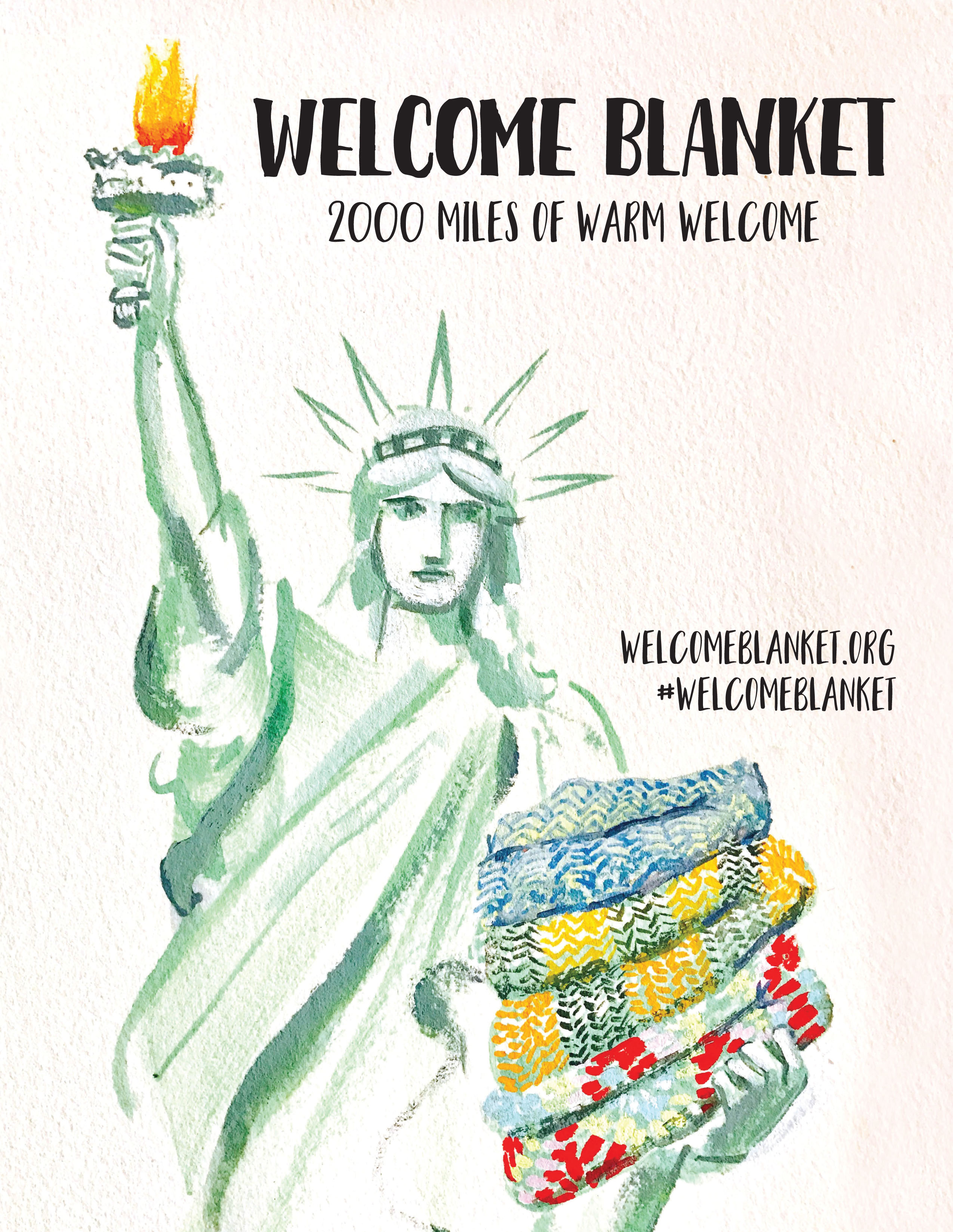

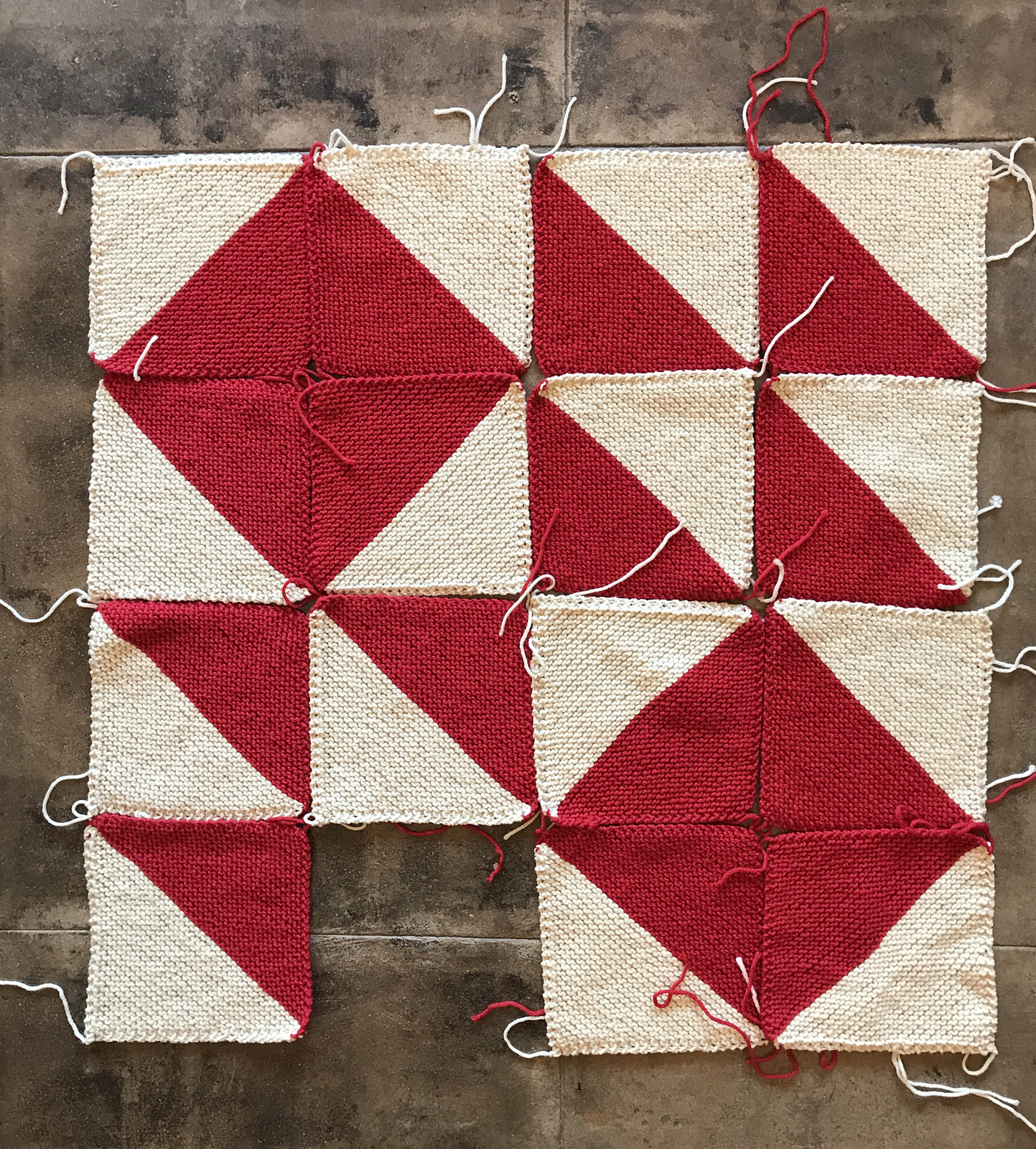
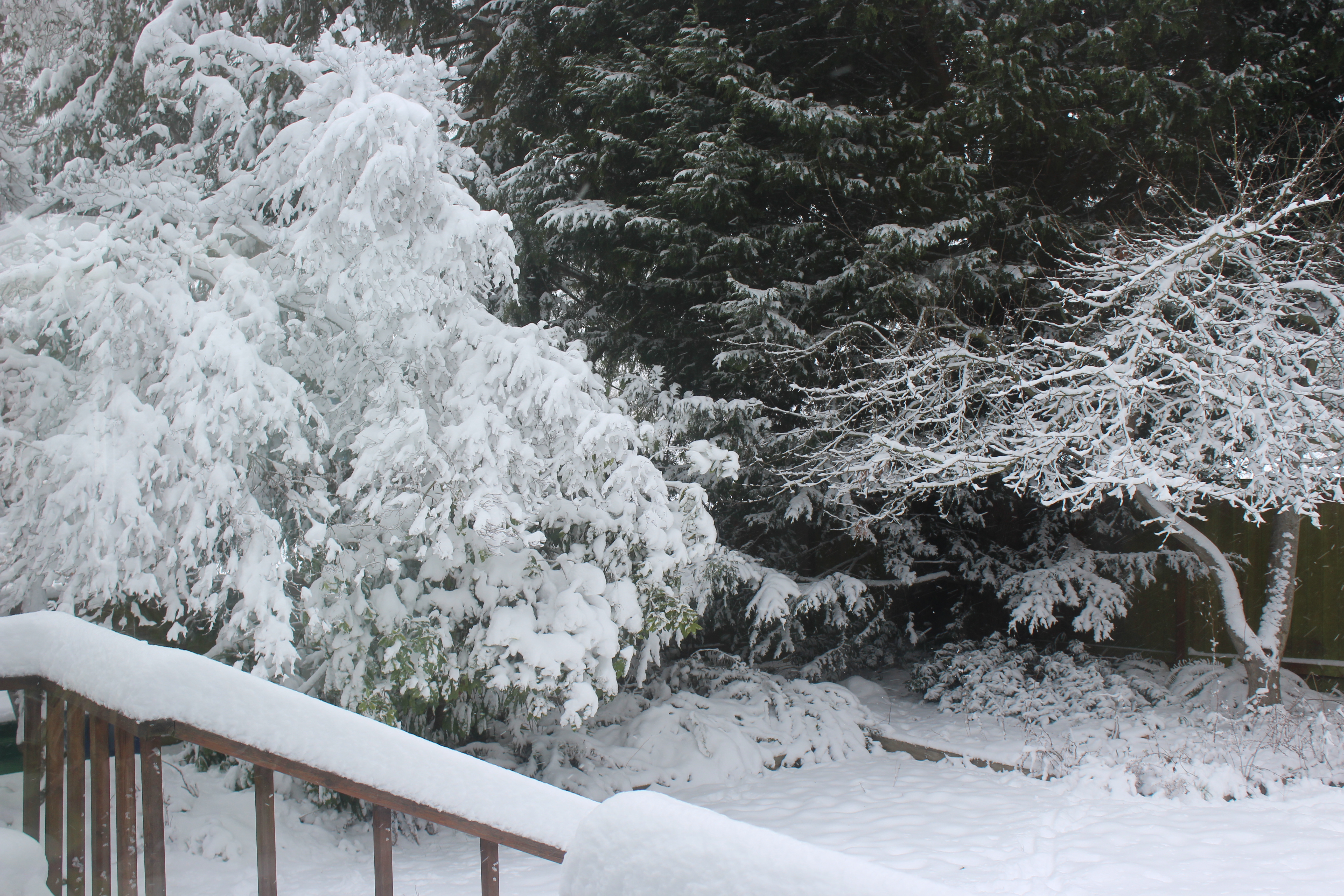 It started snowing Friday around lunchtime, and kept on going all through the night, until we ended up with knee-deep (or at least calf-deep) snow blanketing the city. We hit 9 inches on our back deck on Saturday morning!
It started snowing Friday around lunchtime, and kept on going all through the night, until we ended up with knee-deep (or at least calf-deep) snow blanketing the city. We hit 9 inches on our back deck on Saturday morning!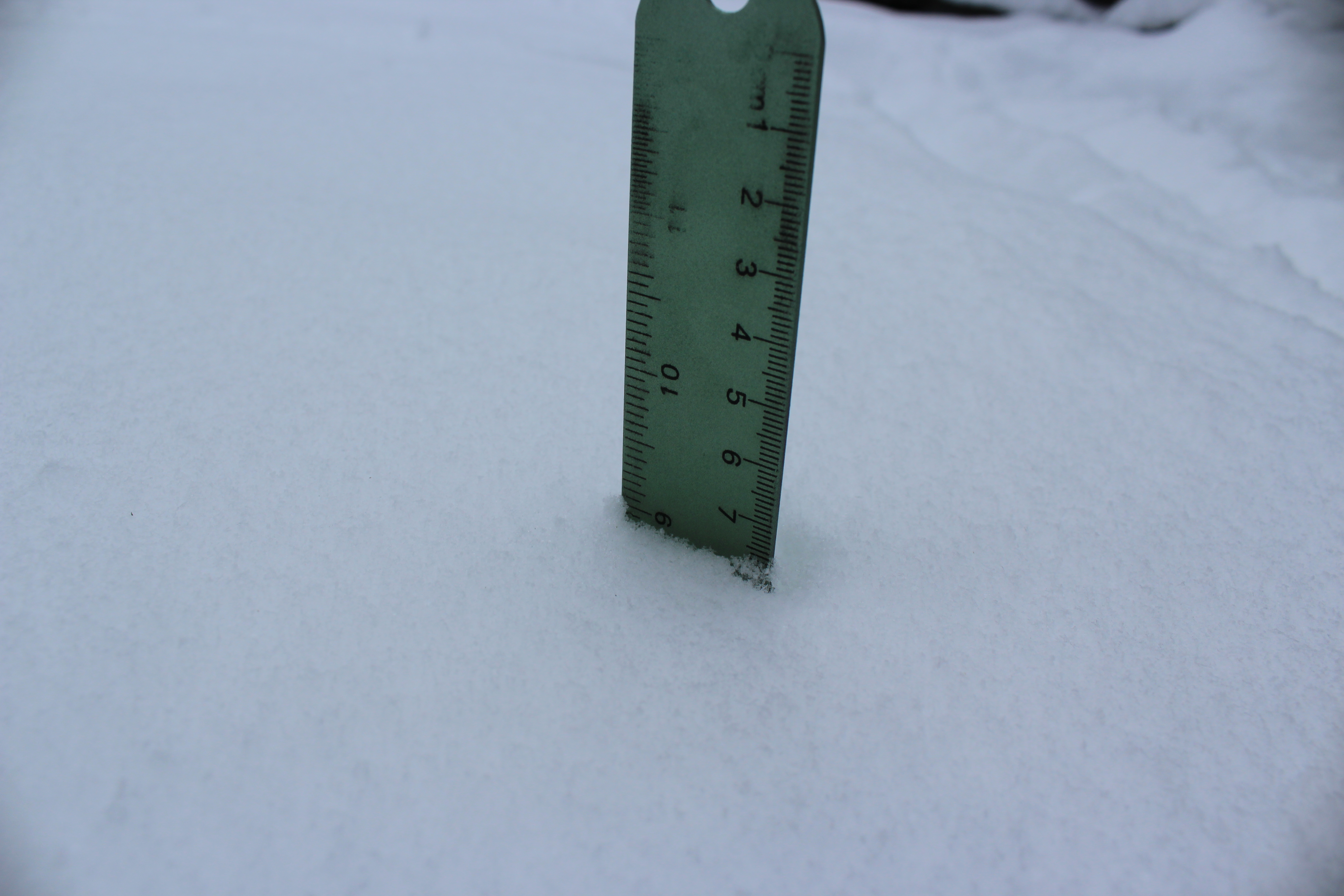 I know that as a transplant from the Midwest I’m supposed to go on and on about how “back in my day we’d drive in three feet of snow, uphill both ways, with our eyes closed, just for fun.” But, I gotta say, I kind of love the Seattle way of dealing with snow. Here, we don’t tough it out, we don’t fight it, we don’t shovel or salt or plow. We just stock up on food when there’s snow in the forecast, call out from work and hunker down. This morning, I’m fully embracing my inner Seattleite and enjoying the snow through the window, cozy with my knitting and a cup of tea. Maybe we’ll go outside and make a snowman later, or maybe we’ll just stay inside until the snow melts.
I know that as a transplant from the Midwest I’m supposed to go on and on about how “back in my day we’d drive in three feet of snow, uphill both ways, with our eyes closed, just for fun.” But, I gotta say, I kind of love the Seattle way of dealing with snow. Here, we don’t tough it out, we don’t fight it, we don’t shovel or salt or plow. We just stock up on food when there’s snow in the forecast, call out from work and hunker down. This morning, I’m fully embracing my inner Seattleite and enjoying the snow through the window, cozy with my knitting and a cup of tea. Maybe we’ll go outside and make a snowman later, or maybe we’ll just stay inside until the snow melts. 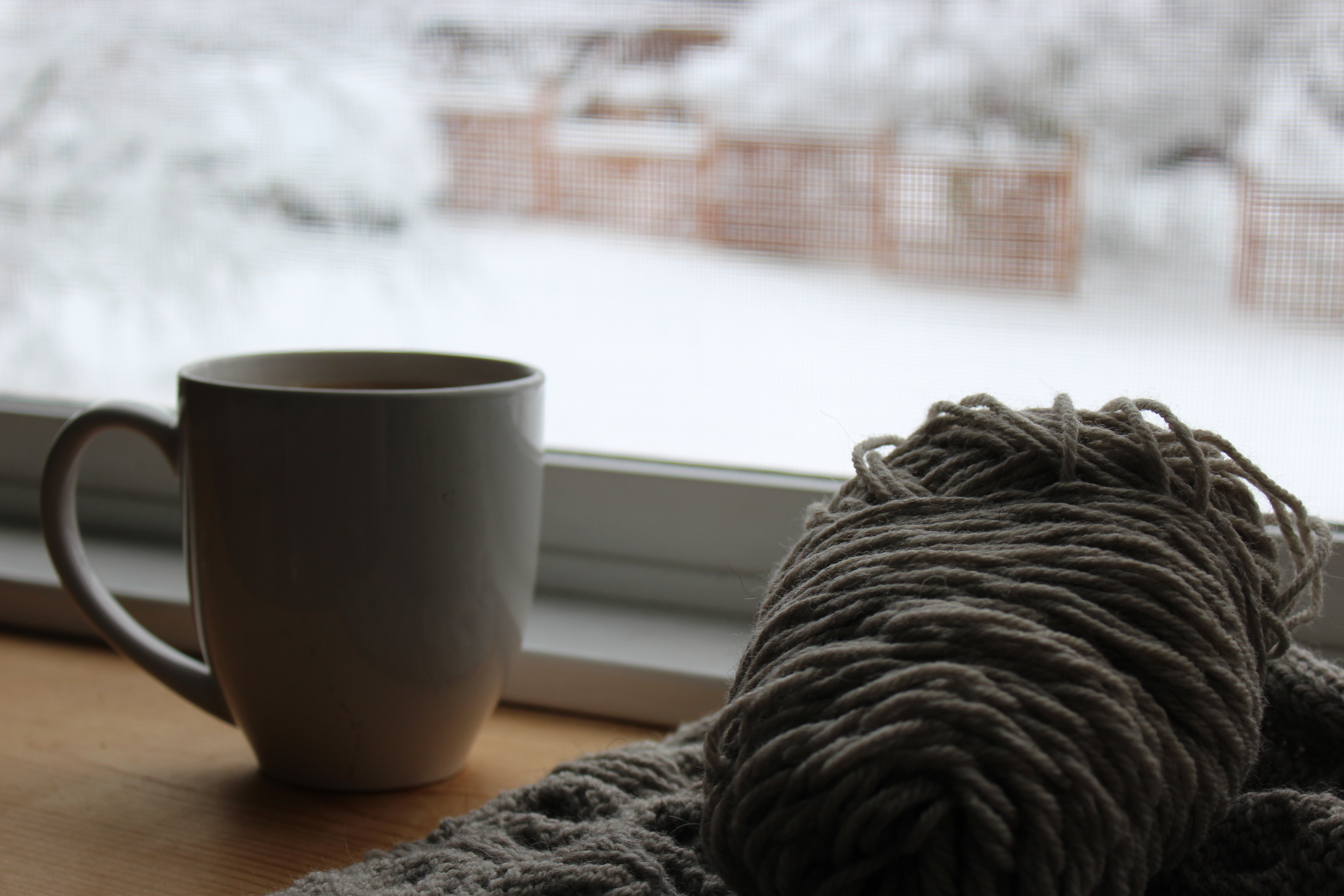 Is there snow where you are? What do you do when the snow hits?
Is there snow where you are? What do you do when the snow hits?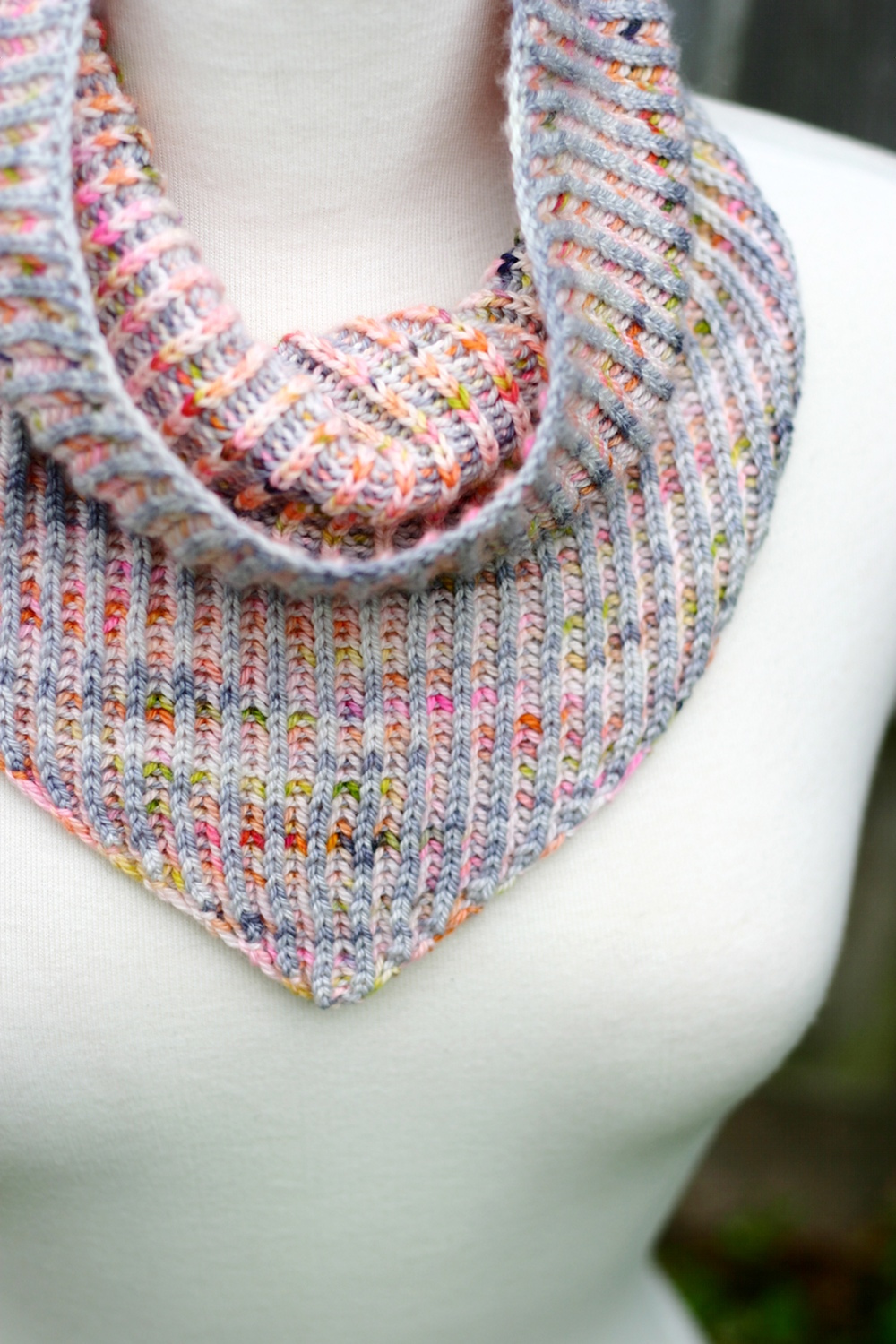 I pulled out
I pulled out 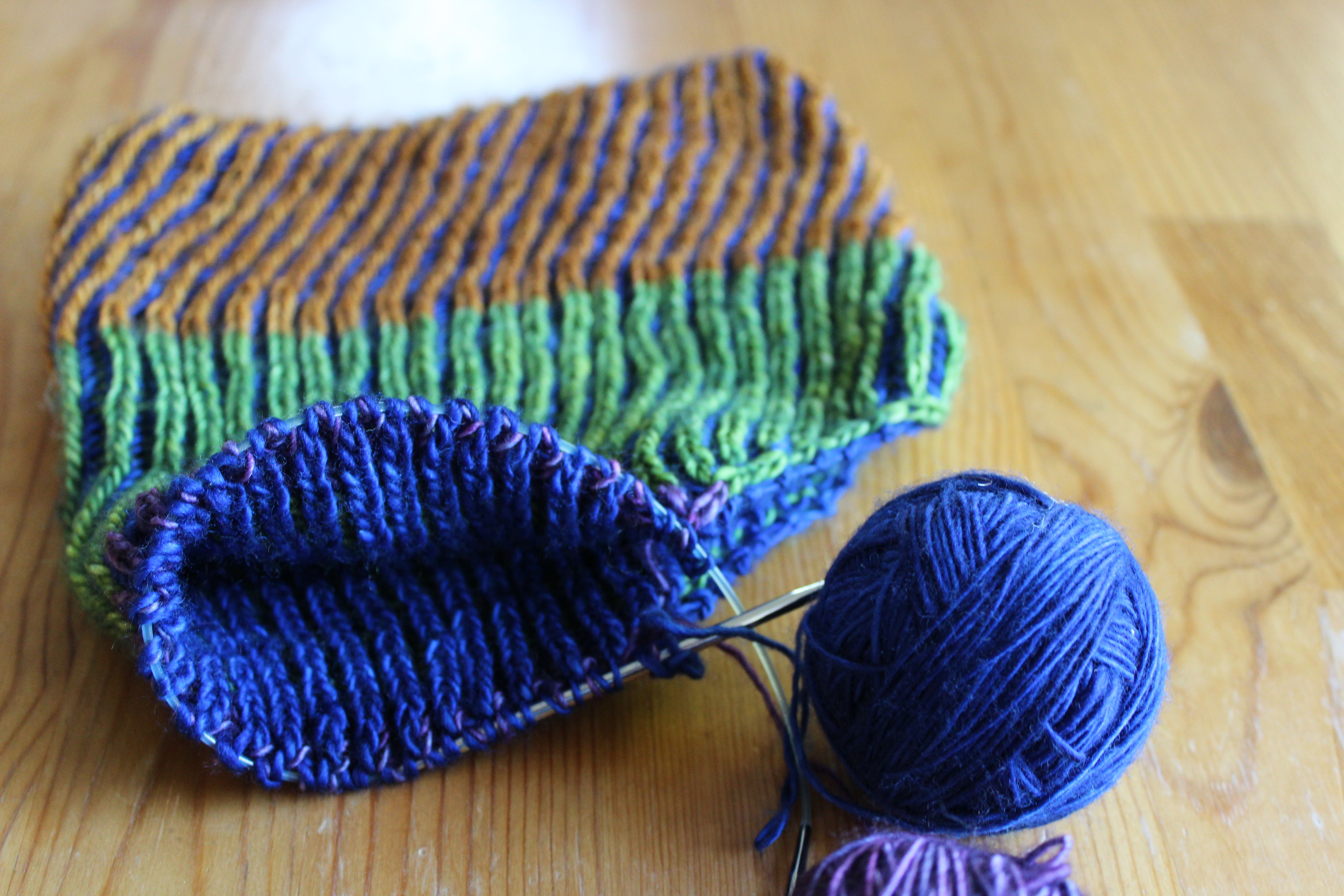 I love how the royal blue peeks through to the outside of the cowl, and I love how squishy the fabric is!
I love how the royal blue peeks through to the outside of the cowl, and I love how squishy the fabric is!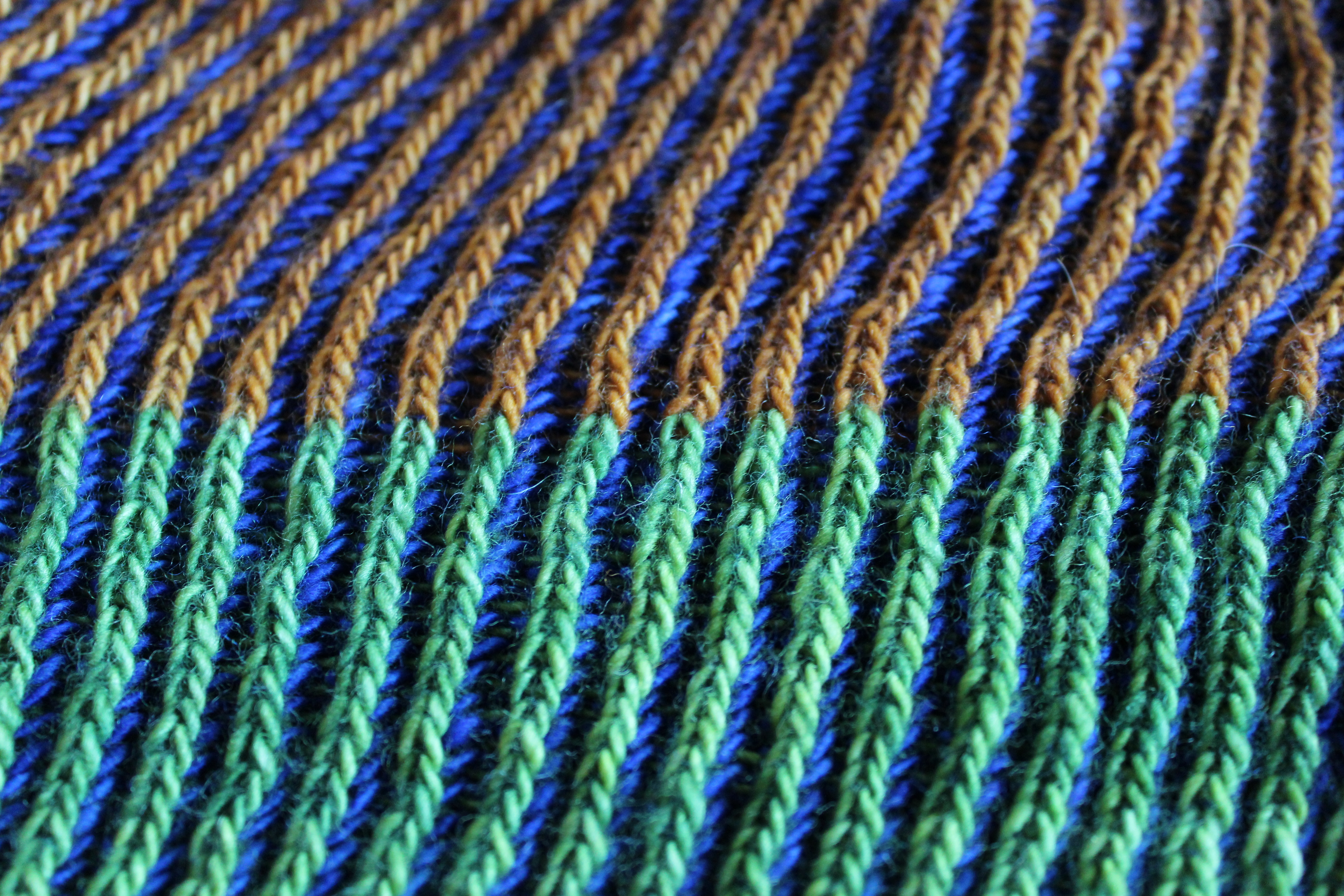 (Though I might actually like the “inside” better. The color-blocking is a little more subtle, just peeking through between the ribs of blue.)
(Though I might actually like the “inside” better. The color-blocking is a little more subtle, just peeking through between the ribs of blue.)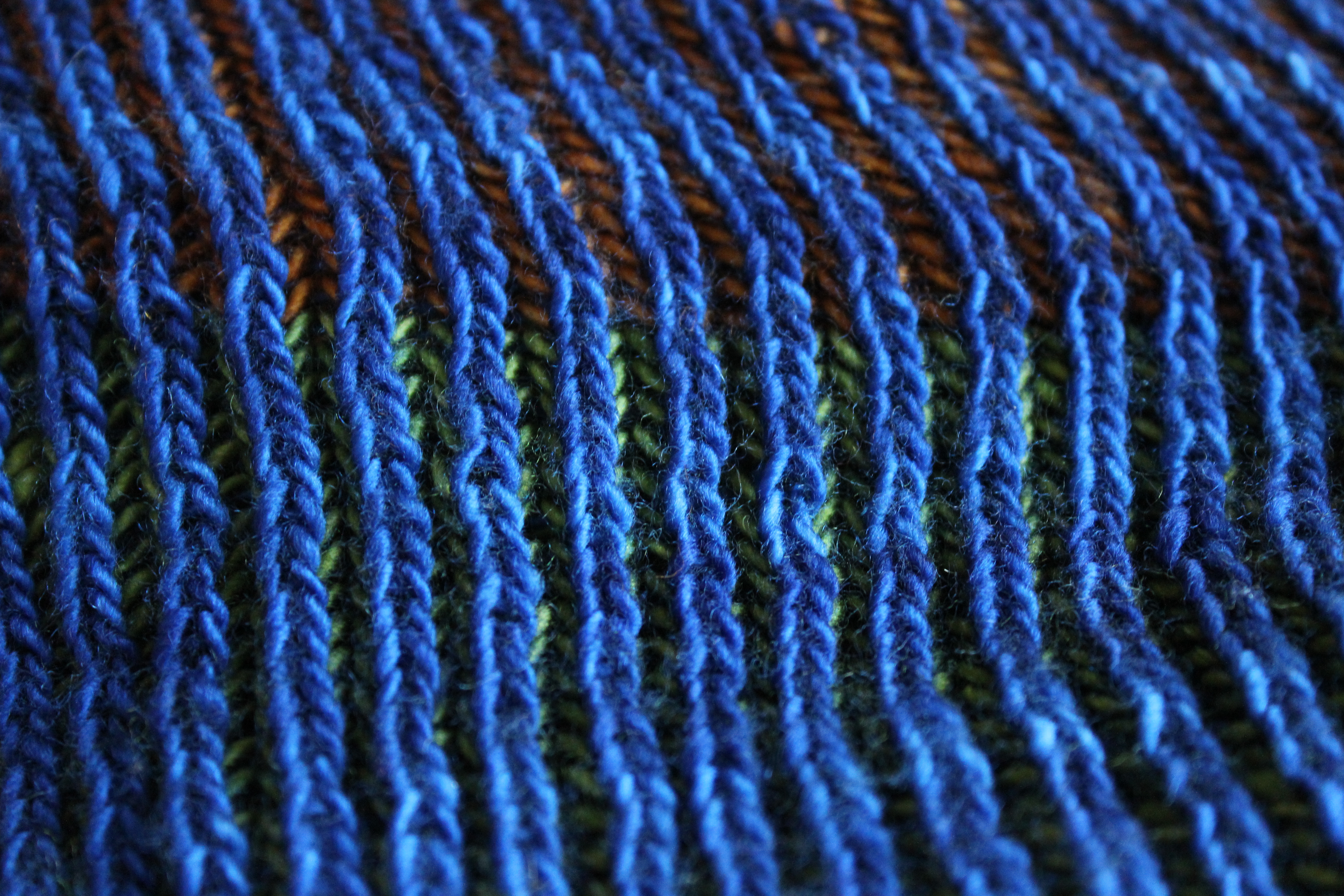 I’ve still got a way to go before I perfect my brioche knitting though, my gauge is a little bit all-over the place and my decreases are a weird and sloppy (though I might be able to block them out a bit). At least I have a reason to keep practicing!
I’ve still got a way to go before I perfect my brioche knitting though, my gauge is a little bit all-over the place and my decreases are a weird and sloppy (though I might be able to block them out a bit). At least I have a reason to keep practicing!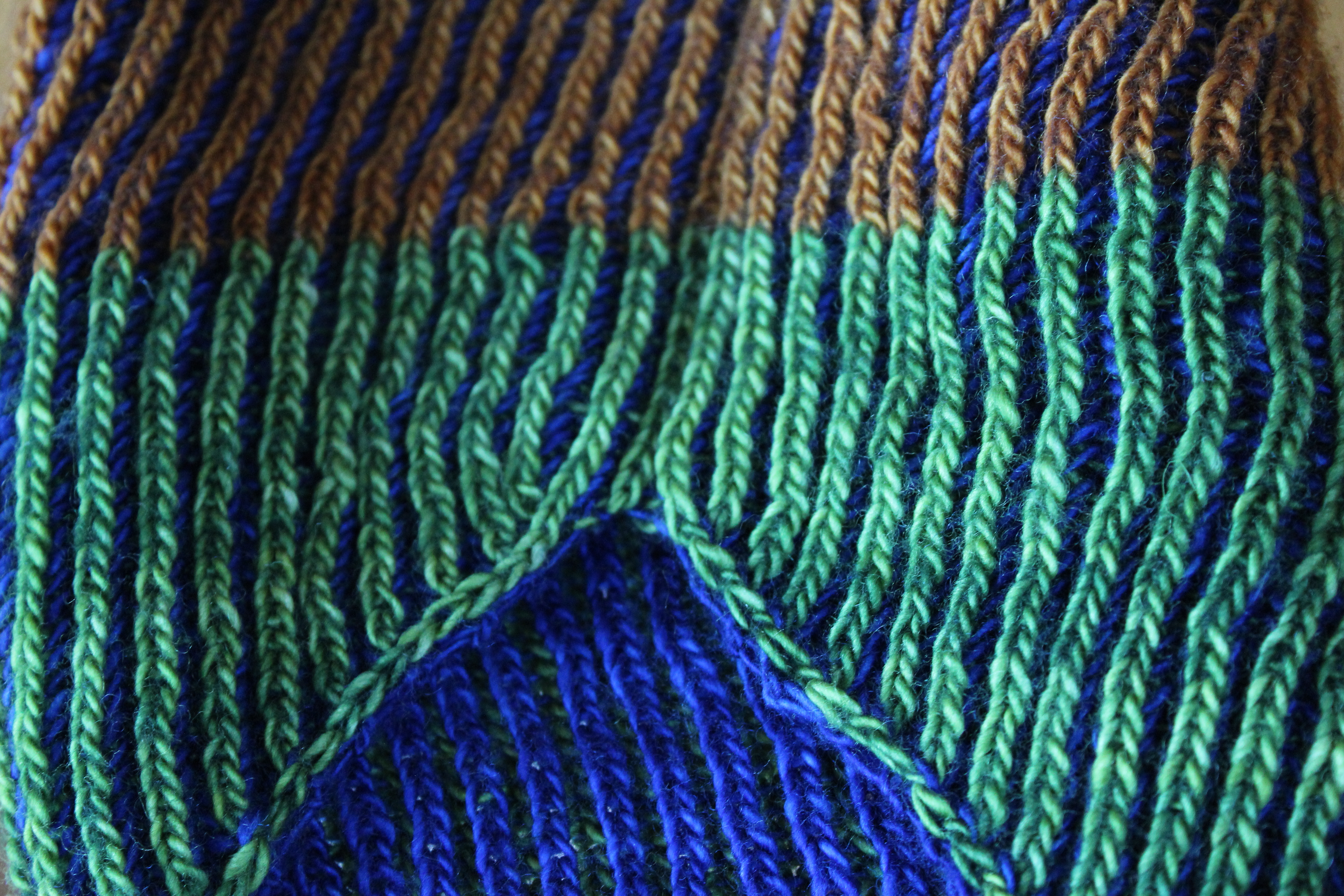 Have you tried any new techniques lately? What were they? How did it go?
Have you tried any new techniques lately? What were they? How did it go?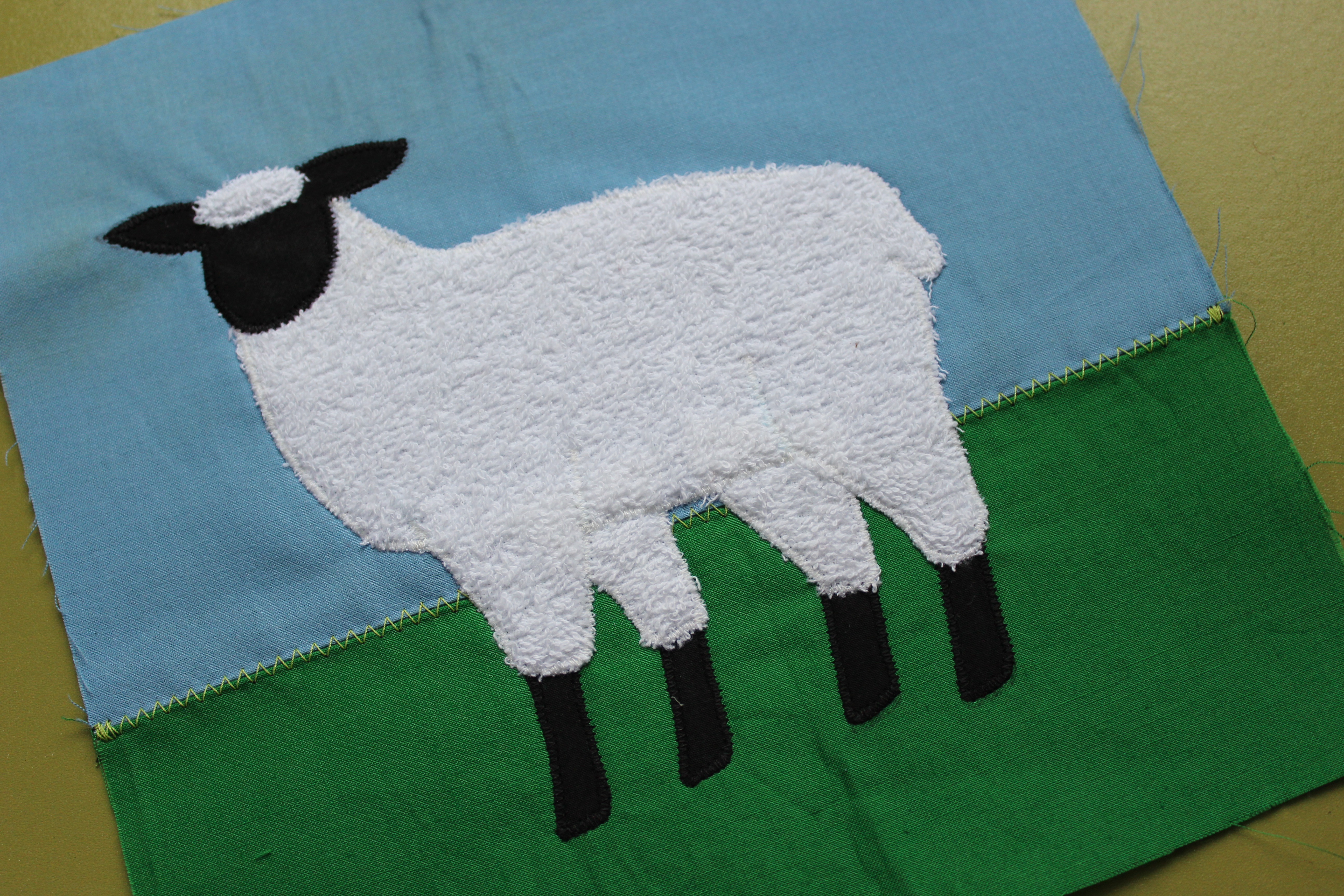 Cute, if I say so myself! (Gotta start teaching them to appreciate wool from an early age, right?)
Cute, if I say so myself! (Gotta start teaching them to appreciate wool from an early age, right?) I really should have taken pictures of each step, but I really didn’t think it was going to work!
I really should have taken pictures of each step, but I really didn’t think it was going to work!